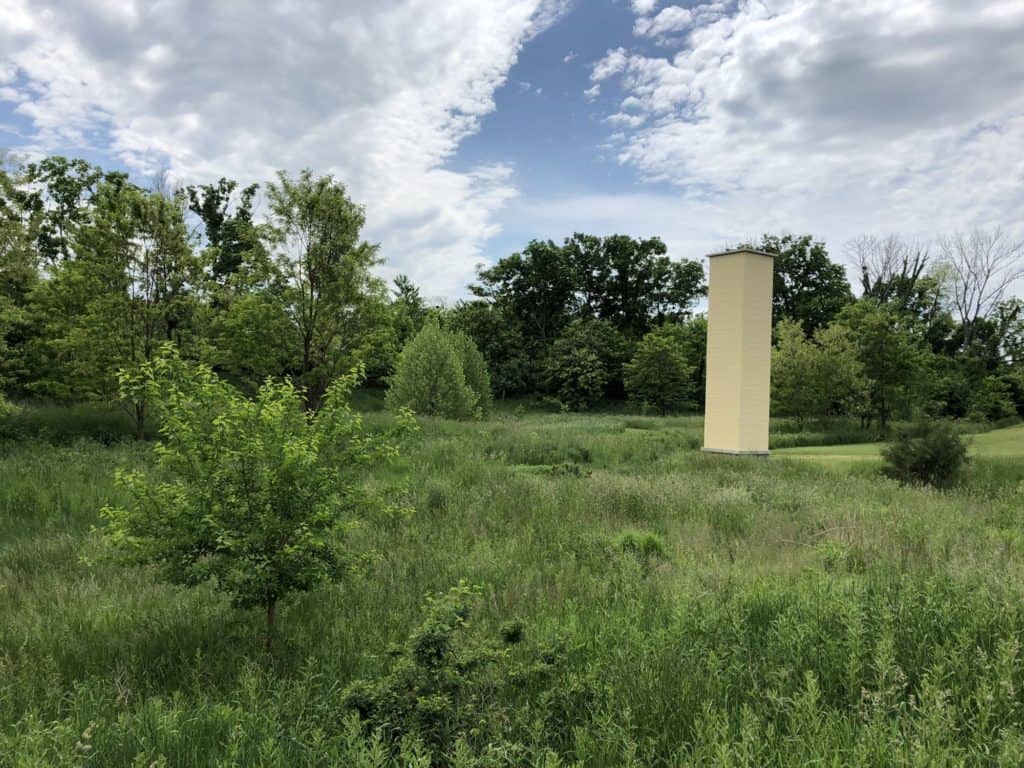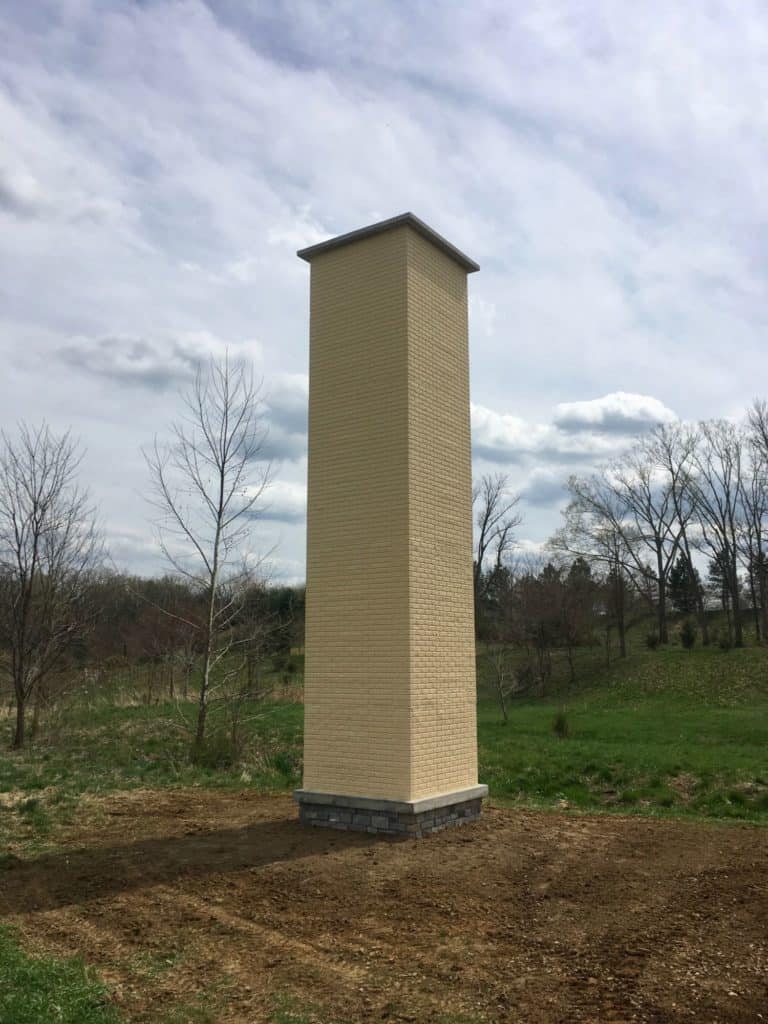The “Raise the Roost” Project

In 2016, concerned community members learned that one of West Virginia’s largest Chimney Swift roosting sites, Sara Cree Hall, was set for deconstruction and appealed to PVAS to protect Chimney Swift habitat on the Shepherd University campus. Unfortunately, the roost at Sara Cree Hall could not be preserved, so PVAS in collaboration with Shepherd University launched the “Raise the Roost” campaign to both raise awareness concerning vulnerable Chimney Swift populations and to replace the roost that was lost.
In March 2019, PVAS successfully “Raise(d) the Roost” with the construction of a new Swift roost structure constructed near the storm water retention area off University Drive on the Shepherd Campus. This area has abundant food and water for Swifts and will not be developed in the future.
The following spring, the first Chimney Swifts were observed using the new roosting tower! Since then, we have established a community science effort called Swift Watch, in which a group of dedicated volunteers (lovingly self-named the “Swifties”), have observed the tower each evening during the spring and fall migration seasons and recorded the number of Swifts dropping in for the night.
About Chimney Swifts

Illustration by Doug Pifer, courtesy of the PA Game Commission
Chimney Swifts (Chaetura pelagica), are a species of neotropical migratory bird that migrates over 6,000 miles each spring from the Amazon Basin to North America for their summer breeding season. Their small, slender bodies make them magnificent fliers. They are insectivores and, as such, are phenomenal natural pest control agents, consuming more than 3,000 insects per day! Historically, Chimney Swifts nested and roosted in standing dead tree trunks, but with the decreased availability of old-growth habitat, they adapted to the urban environments and used chimneys as nesting and roosting habitat. Unfortunately, as historic buildings are removed and chimneys are capped the Swifts’ urban habitat has declined. They have suffered a 65% population decrease since the 1960’s, and are classified as Vulnerable by the International Union for Conservation of Nature. This is just one step from Endangered.
This short video gives an excellent overview on Chimney Swifts and the challenges they face. The video was created by Dr. Jessica Hite, PhD, who is an ornithological and environmental advocate working to protect a threatened population of Chimney Swifts in Bloomington, Indiana.
Roosting Tower Design
PVAS hired Alpha Associates to develop engineering plans for this project. The design included an access panel for cleaning and support for audio and video equipment to monitor activity inside the tower. This access will allow us to gather information about the roosting swifts benefiting ongoing research about this cryptic species. We are proud that this project will mitigate habitat loss, and contribute to conservation science efforts.
The tower design was modeled after an artificial swift roosting tower built by Wake Audubon in North Carolina. Their roost was successful in the first year upon completion and each season the roost grows.
PVAS then hired contractor, Jim Schmitt of Schmitt Construction Company to construct the tower. Jim modified the original engineering plans to allow the tower to be economically feasible for construction. In lieu of bricks, the tower was constructed with stamped concrete that is designed to resemble bricks. This innovative tower model retains the same 100-year lifespan and also provides the Swifts with their ideal roosting habitat.
The roost is built near the stormwater retention ponds on the west side of the Shepherd University campus. The State Ornithologist with the WV DNR, Richard Bailey, has looked at the site and has deemed it an excellent location based on the needs of the Chimney Swifts. Getting consensus around these details is critical to ensuring the sustainability and longevity of this investment. The partnerships and community support surrounding this project confirms what a remarkable community we have in the Eastern Panhandle of West Virginia.







